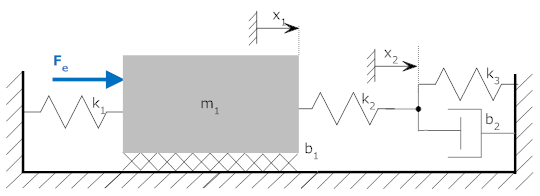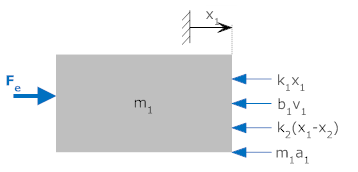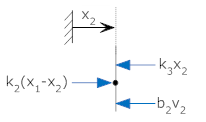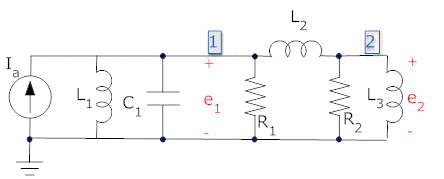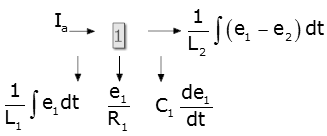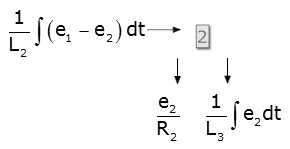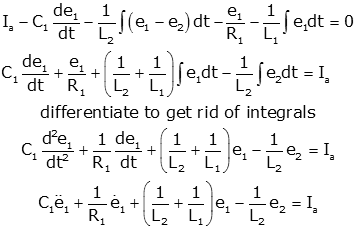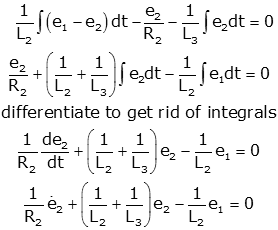Representing Linear Physical Systems with Differential Equations
Contents
Coupled Differential Equations
When analyzing a physical system, the first task is generally to develop a
mathematical description of the system in the form of differential equations.
Typically a complex system will have several differential equations. The
equations are said to be "coupled" if output variables (e.g., position or
voltage) appear in more than one equation.
Two
examples follow, one of a mechanical system, and one of an electrical system.
Developing a set of coupled differential equations is typically only the
first step in solving a problem with linear systems. The next step
A Single Input-Output Differential Equation
A more useful form for describing a system is that of a single
input-output differential equation. In such a description terms with
the output and its derivatives goes on the left side of the equation, terms with
the input and its derivatives goes on the right.
Example 3: Deriving a single
nth order differential equation; a straightforward example
As an example consider the two coupled equations from the mechanical system
above.


If we wish to solve for x1, we can simply solve
the first equation for x2

and put this expression into the second equation

Simplifying, we get

By convention the differential equation is written
Although this last expression is still very complicated, it
is a single third order differential equation relating the output (x1)
to the input (Fe). Using standard techniques, this equation can
be solved in a straightforward manner.
Note: as expected all terms in front of x1 and its derivatives
have the same sign. This is a general rule for passive (i.e., no motors,
amplifiers...) systems.
It is often the case that a simple substitution, such as the one done above,
is impossible. The next example demonstrates this.
Example 4: Deriving a single
nth order differential equation; more complex example
For example consider the case:

where the x1 and x2 are system
variables, yin is an input and the an are all constants.
In this case, if we want a single differential equation with s1 as output and
yin as input, it is not clear how to proceed since we cannot easily solve for x2
(as we did in the previous example). What we can do in cases like this is
to replace each derivative by a multiplication by a variable "s" (you'll see why
this works when you study Laplace Transforms; for now, accept it without
proof). We can solve the resulting algebraic equation, put it in terms of
positive powers of "s." Each "s" in the final result is replaced by a
derivative.
Let's apply the technique to this example. First replace derivatives by
"s"

Now we can solve the first equation for x2 and put this into
the second equation

Multiply by a2s+a3 to get positive
powers of s (no "s" terms in denominator).

Now we collect like powers of s, and write the differential
equation in descending order of derivative, with the output on the left and the
input on the right.

Since the differential equation is equivalent to the other mathematical
representations of systems, there must be a way to transform from one
representation to another. These methods are discussed
here.
References
Replace
